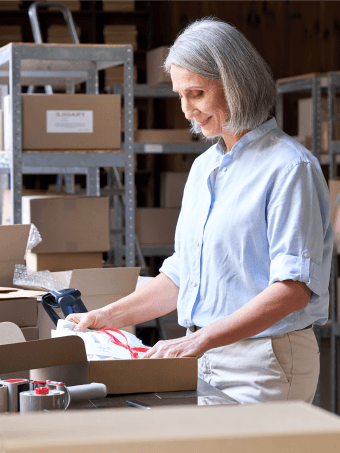The risks of counterfeiting
Counterfeiting refers to the production and distribution of imitation goods that are made to appear as genuine products of a brand without authorization. These counterfeit products often use the brand’s trademarks, logos, and packaging to deceive consumers into believing they are purchasing legitimate items. Counterfeit goods can range from luxury items like designer handbags and watches to everyday products such as electronics, pharmaceuticals, and personal care items.
Counterfeiting poses significant risks to businesses, impacting not only their financial health but also their brand reputation and consumer trust. One of the most immediate and tangible consequences is revenue loss. The latest joint report by the OECD and the European IP Office (EUIPO) revealed that the worldwide trade in counterfeit and pirated goods is now worth a staggering $412 billion. These financial losses are particularly damaging for smaller companies and startups, which may lack the resources to absorb the impact and combat counterfeiting effectively.
Beyond financial implications, counterfeiting can severely damage a brand's reputation. Poor-quality counterfeit products can tarnish a brand’s image, leading to a loss of consumer trust and loyalty. For instance, if consumers unknowingly purchase substandard counterfeit products, they may associate the poor quality with the legitimate brand, resulting in negative reviews.
Trademark registration - your first line of defence
Registering your trademarks is one of the most essential steps to protect your brand online. Trademarks are unique identifiers, such as logos, names, or slogans, that distinguish your products from others in the marketplace. By officially registering these elements, you gain the legal rights necessary to prevent others from using or copying them, which is vital for maintaining your brand’s identity and reputation.
When your trademark is registered, it provides you with exclusive rights to its use. This means you can legally stop others from using a similar logo, name, or slogan that could confuse customers or damage your brand’s reputation. Having a registered trademark also strengthens your position in any legal disputes, making it easier to take action against those who try to imitate your brand. This can include preventing the sale of infringing products and seeking compensation for any losses you may incur.
To maximize your chances of successful trademark registration, it’s important to conduct a thorough trademark search before applying. A comprehensive search ensures that your desired trademark isn’t already in use, reducing the risk of legal complications or rejection during the registration process. At Trama, we offer a free trademark search, providing results within 24 hours. This search can help you move forward with confidence, knowing that your trademark is clear for registration.
Maintain a product library
Maintaining a comprehensive product library is a crucial aspect of brand protection, serving as a definitive record of all your business's products and marketing materials. This archive should include detailed descriptions, high-resolution images, and specifications of each product, as well as samples, if possible. A well-documented product library provides several significant advantages, particularly when dealing with infringement cases.
Firstly, a product library allows you to establish a clear timeline of your products’ existence, including launch dates, design changes, and discontinuations. This historical record is invaluable in legal disputes, as it helps demonstrate that your business was the original creator of a specific design or product feature. For instance, if a competitor claims to have developed a similar product independently, your product library can be used to show prior art, proving that your design predated theirs. This documentation can be crucial in both defensive and offensive litigation, making it easier to assert your rights and challenge infringements.
Secondly, a product library aids in the identification and comparison of counterfeit products. When suspected counterfeits are discovered, having a detailed reference of your authentic products allows you to quickly and accurately assess the differences. This can include discrepancies in material quality, craftsmanship, or even minor design elements that counterfeiters might overlook.
Continuously monitor the market
Counterfeit products often flood online marketplaces. Regularly monitoring these platforms is essential to identify and address potential infringements. Assign dedicated staff or hire external providers to conduct frequent and consistent searches for counterfeit goods. Utilizing automated monitoring tools can also enhance efficiency in detecting unauthorized copies of your products.
At Trama, we offer a free brand infringement check that covers all major social media platforms and marketplaces, providing detailed insights on any identified threats to your business. Our services help you stay one step ahead of counterfeiters, allowing you to focus on growing your brand with peace of mind.


